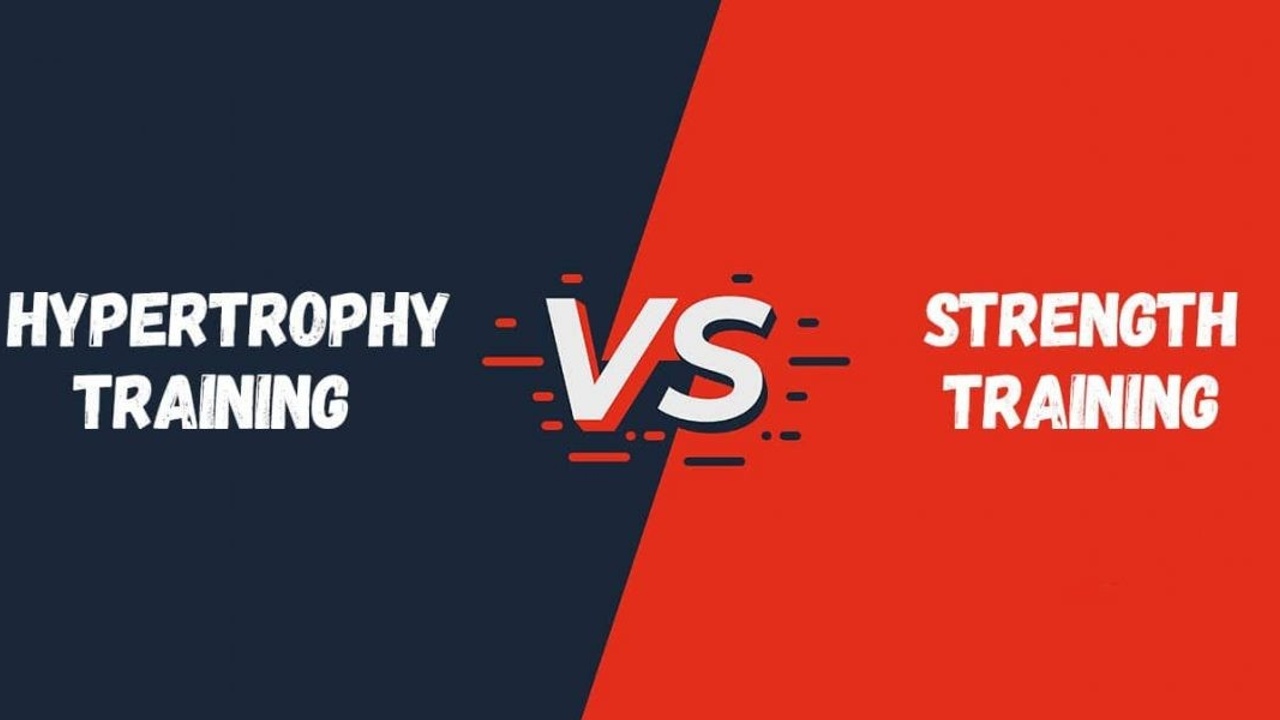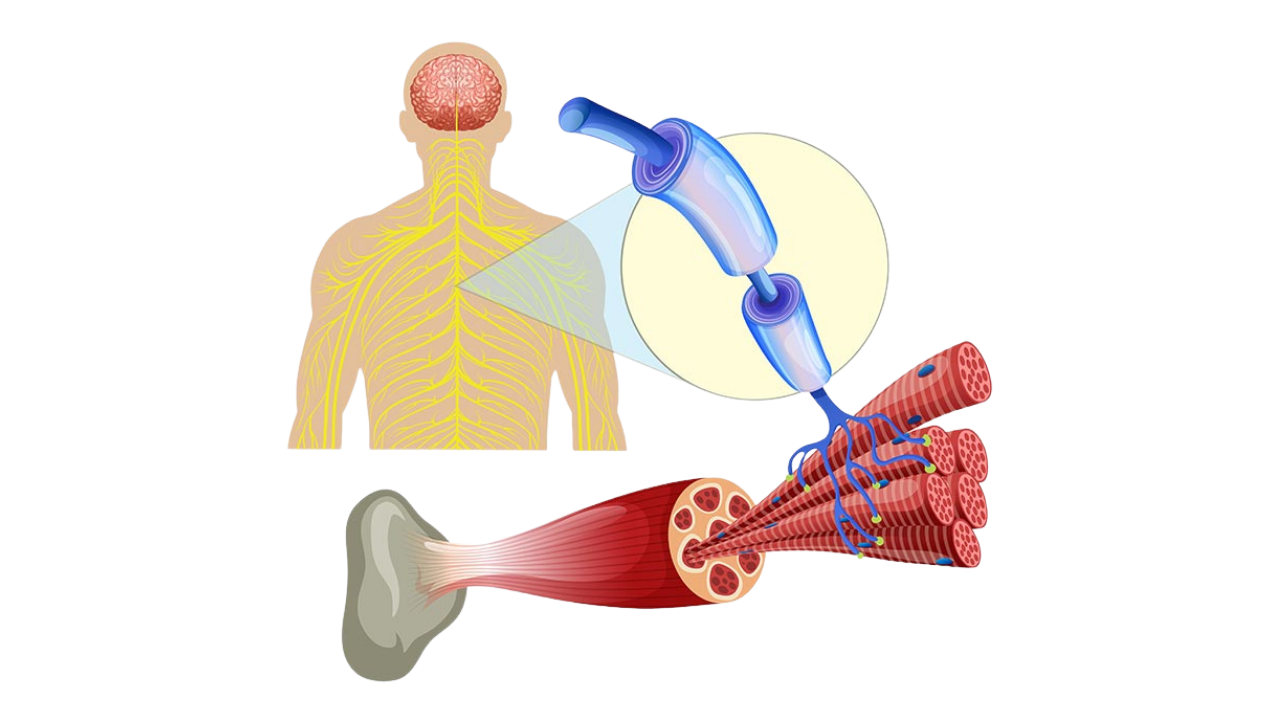Hypertrophy vs Strength Training: What’s The Difference?
Apr 29, 2021
At first glance, training for muscle building (hypertrophy) and muscular strength can seem like the same thing:
We need to lift weights intensely and consistently to get bigger and stronger.
And while this certainly is one plausible way to look at the whole picture, things aren’t as simple as they appear.
Sure, strength and hypertrophy training have many similarities. But, at their core, they are two different ways of training, both designed to help us achieve different goals.
Today, we’ll go over everything you need to know about hypertrophy vs strength training.
Hypertrophy: What Are Our Muscles Made From And How Do They Grow?
To understand muscle growth, we first need to gain a basic understanding of skeletal muscle anatomy. A muscle (or muscle belly, if you will) consists of multiple groupings of muscle fibers called fascicles.
These bundles consist of many muscle fibers and run parallel to each other. Perimysium, a type of connective tissue, envelops them.
Now, at a deeper level, we have the individual muscle fibers (or muscle cells). These are long and cylindrical contractile units that allow our muscles to produce force. Each muscle fiber consists of many myofibrils – small units that run parallel to each other. Inside each muscle fiber (and between the individual myofibrils), we also have sarcoplasm – a type of fluid that contains vital components such as ATP molecules.
Going one level deeper again, we reach myofilaments (actin and myosin)– these are the thin and long units that make up individual myofibrils.
So, from a small to broad view, it looks like this:
Myofilaments —> Myofibrils —> Muscle fibers —> Fascicles —> Entire muscles
Now that we have an overview of muscle anatomy out of the way, let’s look into how muscles actually grow.
Ultimately, muscle growth occurs when a process within cells called muscle protein synthesis (MPS) exceeds that of muscle protein breakdown (MPB), over time. The signal for MPS is initiated by factors like resistance training and protein intake.
This then causes myofibrillar hypertrophy – the increase in myofibril population, which effectively makes our muscle fibers denser, with a higher strength potential. Another type of muscle growth called sarcoplasmic hypertrophy is also possible though, which involves the expansion of the intracellular fluid component and proteins etc. While possible, it appears this may be a short term effect from training and more research is needed to fully understand it’s contribution, if at all, to long term gains. It’s also worthy to note that sarcoplasmic hypertrophy would not contribute to the force-generating capability within the muscle as it is the myofibril that houses the contractile elements.
What Is Strength And How Does It Relate to Muscle Physiology?
Physical strength refers to our ability to exert force through a given range of motion, or to hold a static position. So far, research and observations have found that numerous factors determine how strong we are:
1) Neural factors
This is perhaps the most important aspect relating to strength, and it refers to the ability of our nervous system to optimally stimulate the muscle mass we have available. This primarily depends on three things: motor unit recruitment, synchronization, and rate coding.
Contraction of muscle begins in the brain, which fires an electrical signal through the nervous system, arriving at the muscle, causing excitation and contraction. The rate at which these electrical signals are sent from the brain is termed rate coding.
From our understanding of muscle anatomy as discussed above, there are many muscle fibers packaged within whole muscle, each with the ability to produce force once stimulated.
This packaging gives the brain an important ability to stimulate the appropriate number of muscle fibers to overcome a given resistance. Let’s take an example of an everyday movement like lifting a pen off a desk. Unless you want the pen going through the roof, it’s probably intelligent to recruit only a few muscle fibers (again, enough needed to overcome this resistance). Whereas, on a 1RM deadlift, you’ll want the ability to recruit all muscle fibers available to overcome this high level of resistance.
This ability to recruit the appropriate number of muscle fibers is where motor units come into play. A motor unit is defined as a motor neuron (a type of nerve cell), along with all the muscle fibers it attaches to (as shown in the image below). And in the body, we have motor neurons that attach to a small number of muscle fibers (low threshold motor units) and neurons that attach to a large number of muscle fibers (high threshold motor units).
To produce a force to overcome a relatively small resistance, as in the case of our pen example above, only low threshold motor units will, therefore, be recruited. Whereas, both low and high threshold motor units would be needed in the 1RM deadlift example. This is in accordance to the size principle.
Furthermore, synchronization can also play a role in producing force, whereby multiple motor units can be stimulated at the same time to produce a stronger and more efficient force.
These aspects are dependent on electrical signals, originating in the brain and arriving at the muscle. And this brain to muscle communication can develop over time.
Neural factors help explain how seemingly small people can sometimes lift incredible amounts of weights – such as how Naim Süleymanoğlu clean and jerked 190 kilos and snatched 152.5 kilos at a body weight of just 63 kilos.

2) Biomechanics and Anatomy
Our overall anatomy and bone structure can make us better suited for some exercises and allow us to get impressively strong. But biomechanics can get complicated fast, with aspects relating to physics to consider like levers, moment arms, mechanical advantage etc. So while important, it’s not something we’ll get into detail today.
3) Movement Proficiency
Being able to lift heavier weights also depends on skill. Like any other pursuit in life, weight lifting also depends heavily on practice and skill acquisition.
As you take up a new movement, you first find it awkward and foreign. But then, as you practice it over several workouts, you find that it becomes more natural and that you can gradually do it with more and more weight.
4) How Stressed and Fatigued We Are
Your ability to exert force on a given day will largely be impacted by how recovered or stressed out you are.
Because of that, you shouldn’t judge your long-term trajectory on a single good or bad workout, as that can’t give you the full picture.
5) Our Level of Muscularity
Larger muscles typically have a higher strength potential. Thanks to myofibrillar hypertrophy, our muscles accumulate more contractile units. Then, through practice and repetition, we can ‘teach’ our muscles to work harder and exert more force (see point 1).
In the same line of thinking, being more muscular doesn’t necessarily mean that you’ll be stronger. There are plenty of big bodybuilders who are twice as weak as elite powerlifters, Olympic weightlifters, strongmen (and women), and similar.
Hypertrophy vs Strength Training – Practical Training Tips
Now that we have a basic understanding of strength and muscle hypertrophy, the question is, let’s round-up with an overview of some practical training tips:
Training for Muscle Size
There are many ways to structure your training for optimal growth. But, for the most part, here are the rough resistance training guidelines you should follow:
- Do enough training volume for the muscle groups. As a very general guideline, according to the literature, we should do at least ten weekly sets for each muscle group.
- Train in a variety of rep ranges to cause different types of training stress to your muscles – anywhere from five to twenty reps per set. In my opinion, most should cluster around the 6 - 12 rep range. However, if leaning on metabolic stress with higher rep ranges, ensure you are training with a high intensity of effort.
- Avoid redundant programming which trains a muscle in the same path of motion, or anatomical length.
Training for Strength Gains
Here some tips on how to train for optimal strength development:
- Specificity – Do the exercises you want to improve on more often. For example, if you want to build impressive squatting strength, then squat multiple times per week. Also, prioritising exercises you want to get stronger at earlier in the workout would be a good idea (less CNS and peripheral fatigue).
- Do more sets with weights that are above 85 percent of your 1 RM. This means using a high intensity of load and a lower rep range – more doubles, triples, and sets of five reps. Leave the lighter weights for accessory and isolation exercises.
- Use longer rest periods between sets (~2-3 minutes). This will aid recovery (CNS and peripheral) between sets to optimise force production in the following set.
As always, thank you for reading and I hope this article was helpful in understanding the differences between hypertrophy vs strength training!
If you have any questions, don’t hesitate to reach out.
Looking To Drop Fat And Fuel Your Workouts? 👇
Get my FREE 7 day 2200 Calorie High-protein Fat Loss Meal Plans, built to keep you full, fuel your workouts, and help you lose fat without giving up your favourite foods.
Enter your details to grab your free copy now!
No spam here. Only quality tips and updates that help you 🤝

